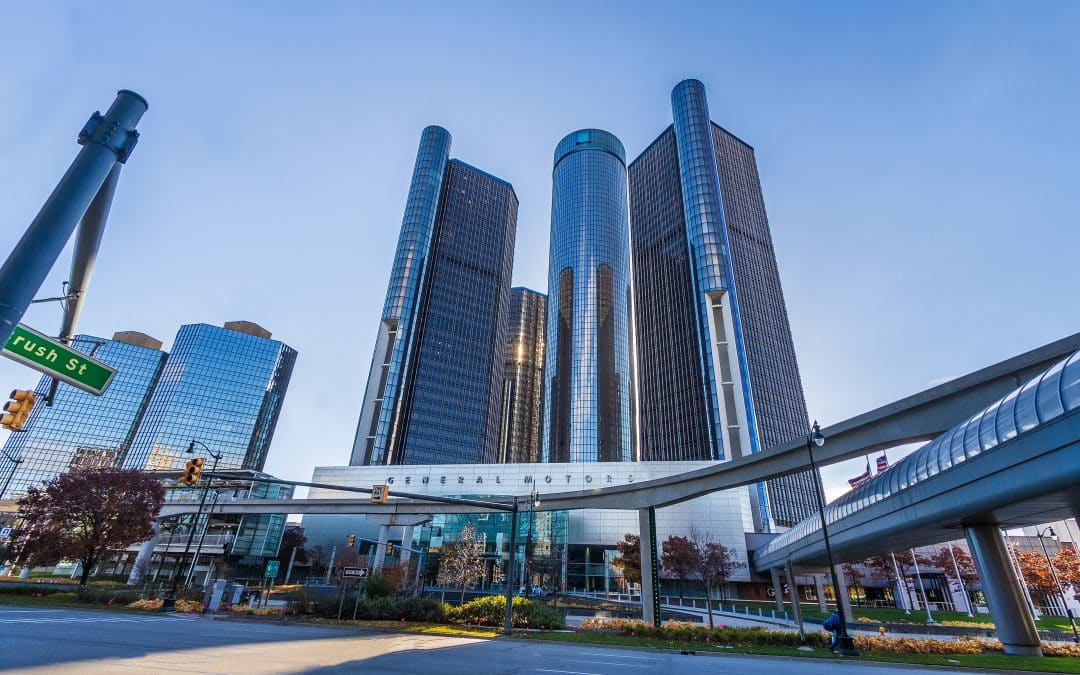A Phil Hall Op-Ed: Dan Gilbert is not the type of guy who needs a handout. After all, he is the co-founder and majority owner of Rocket Mortgage, the founder of Rock Ventures, and the owner of sports teams that include the NBA’s Cleveland Cavaliers and the AHL’s Cleveland Monsters. Forbes estimated his net worth at $26 billion.
Likewise, General Motors is a highly successful company. In October, GM released its third quarter earnings that boasted revenue of $48.8 billion, a 10.5% year-over-year spike. The third quarter was so strong that the automaker increased its 2024 guidance.
With all that money in their possession, why are Gilbert and GM trying to shakedown $350 million from taxpayers on a real estate development designed to fix a major problem that the business tycoon and the automaker created? The problem involves the most prominent structure in Detroit’s skyline.
The Renaissance Center was built by Henry Ford II in the 1970s as part of an initiative to reanimate Detroit’s economically dismal downtown area. General Motors acquired the complex in 1996 and moved its headquarters into the property. Two years ago, as the economy was emerging from the chaos created by the Covid-19 pandemic, GM CEO Mary Barry insisted that will the company planned to keep its Detroit headquarters at that site.
But with the rise of remote work and the departure of roughly 5,000 employees via early retirement buyouts, the Renaissance Center proved too big and costly for GM to maintain. In January, two of the towers at the property were sold for an undisclosed sum – at the time of the sale, one was occupied by Blue Cross Blue Shield of Michigan while other was mostly vacant.
Back in April, news leaked that GM was going to relocate its headquarters from the massive seven-tower property known as The Renaissance Center to Hudson’s Detroit, a mixed-used complex being developed by Gilbert. If and when GM moves there, the Renaissance Center will lose its largest tenant and leave a vacancy void that no other Detroit company could fill.
There is a new scheme put forth by Gilbert’s development firm Bedrock Detroit and GM: the 5.5 million-square-foot complex would shed 1.25 million square feet with the demolition of two towers, with the newly empty space converted into a six-acre waterfront park. As for the rest of the complex, one of two remaining 39-story office towers would be converted to housing while offices another would undergo renovation. The tallest tower, which stands 73 stories, currently houses a Marriott hotel, but it would see some of its floors converted from lodging to housing.
Bedrock Detroit is estimating the redevelopment at $1.6 billion redevelopment plan, and it offered to put up $1 billion of the budget. General Motors volunteered $250 million to the costs. As for the rest of the financing, Gilbert and GM believe taxpayers should foot the bill – with $250 million in state support and $100 million from Detroit’s Downtown Development Authority.
And what happens if Gilbert and GM don’t get taxpayer money? According to the Detroit Free Press, these partners are threatening to demolish to full Renaissance Center. No, that is not a joke. If Gilbert and GM are denied taxpayer funding for their plan, they would enact the largest voluntary demolition of an office complex in history.
What’s galling about this threat is that Gilbert’s Hudson’s Detroit took advantage of public financial input for its creation – and, to date, GM is the only tenant signed up for that new complex, which is still under construction. Thus, taxpayers help pay for a complex that no one outside of GM wants and now the taxpayers are being coerced into tearing down structurally sound office buildings that GM doesn’t want anymore.
There is bipartisan opposition in Michigan’s state legislature to the shakedown effort for taxpayer funds at Renaissance Center, although Detroit’s elected officials are much more receptive to the idea. Hopefully, a more intelligent idea for the Renaissance Center’s future can be conceived without Gilbert and GM trying to dip their hands into taxpayers’ pockets to fund their endeavors.
Phil Hall is editor of Weekly Real Estate News. He can be reached at [email protected].
Photo: BSPollard / Getty Images












I don’t think the tax payers are responsible for any amount of money. Stop fleecing the people.
Big company’s always abandoned big building and leave it the city to deal with. I say the city needs start putting in contracts what happen if you abandoned buildings. Let them tear it down. It’s time for something new.
I would like to see the Renaissance replaced with a new convention center and add waterfront hotels and housing and add new Detroit Lions stadium with views of Windsor.
Please research tax payers public money given for Rocket’s past promise developments with the promise of hiring Detroit residents and minorities what are the percentage of that promise kept today????
The Renaissance towers should be converted into lateral greenhouses to provide food for the citizens of Detroit and jobs for the citizens of Detroit. Detroit would be a leader in this undertaking and demonstrate to the world. What can be done with these inefficient structures?
Hi, my name is Leslie Moss and I would love to see the RENCEN converted into a upscale housing unit! I personally wouldn’t mind moving in it! Yes, I would help foot the Bill!! GoBlue!!
Dr.Leslie Otha Hernandez Moss and a University of Michigan Alum.
Why not use the buildings for mental health facilities?The state should pay for it!!
It would help people get off the streets!
First of all Why? Do you need the tax payers money to pay for another development! Its seems that GM can pay the rest
Detroit needs to put in large major building contracts that will make big corporations either pay for buildings to be demolished and cleared or find and secure another occupant. Don’t we have enough buildings in Detroit that GM Chrysler And Ford abandoned over 30 years ago or more that are still standing. And Why destroy an well know skyline that is the symbol of Detroit!
The city should get something in return for their investment, like a percentage of ownership including a portion of the rent.